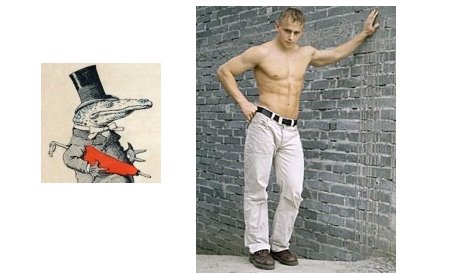I've started rereading Mansfield Park with a view to hatcasting it, as just suggested by Crown, or perhaps doing something entirely different. Already towards the end of Chapter 2, I encountered the very passage about jigsaw puzzles that was referred to in a recent TLS review of Margaret Drabble's new book The Pattern in the Carpet (see below for an excerpt from the review). Last week I listed Drabble among the novelists I had read in the 70's.
I experience such mention-loops frequently, in my philosophy and sociology readings as well. In some cases, I have surmised that my activities and interests must partly overlap those of other people, in some cloudy network of association and cross-reference involving certain publications and the internet. They're not just coincidences, but nor do they add up to a Zeitgeist. More like a gang of Caspar-the-ghosts.
Yet the temporal proximity of these semi-events is strange, when they come to my attention. It's not surprising, for instance, that I read Austen novels long ago, and that many other people have read them too, and that someone mentions one of her novels today. That's merely due to a certain type of shared cultural background. What surprises me is that a particular detail in a particular novel of Austen crops up within a short space of time in contexts that have nothing to do with each other.
In view of the enormous quantity of stuff "mentioned" in the internet, and of the fact that I am not a culture-vulture, and read seemingly quite disparate things in a disorganized way - what could explain these mention-loops? Perhaps it's a kind of "statistical observation defect" on my part, as I think it's called. Precisely because I can't really organize the enormous quantity of stuff that goes through my head, I clutch at coincidences. Thus "primed" to see coincidences, I then see them everywhere. It's the kind of thing that leads some people to a belief in telepathy, or to paranoia.
It may just be a way of clinging to the mast as my ship tosses on the high seas of words. Order out of noise.
The review of Drabble's book starts in this way:
Virginia Woolf once used the idea of patchwork to describe biography, an art which tacks together pieces of stuff with torn edges. Margaret Drabble, instead, chooses the jigsaw puzzle as the controlling metaphor for her new memoir. This book, she tells us, was originally intended as a “harmless” jeu d’esprit on the history of the jigsaw; personal material began to creep in; but then jigsaws reasserted themselves, pushing the autobiographical elements to the edges of the frame. The result is a generically indeterminate work of covert sophistication – “I am not sure what it is”, writes Drabble with deceptive artlessness – whose meandering surface hints at personal depths often too painful to apprehend directly.
The phrase “jigsaw puzzle” was not coined until the late nineteenth century – from the narrow-bladed tool known as a jigsaw, originally designed for cutting fretwork, and fitted to a treadle in the 1870s, allowing for the easier production of the puzzles. The earliest examples, dating from the 1760s, had smooth, rather than interlocking, edges, and were educational aids designed to teach geography. When one of the Bertram sisters ridicules Fanny Price in Mansfield Park for being unable to “put the map of Europe together”, she is referring to just such a puzzle. It is not surprising that the impoverished Price family could not afford one, as the cost of these magnificent “dissected maps” tended to confine their use to upper-class households; they were also considered helpful for teaching young royals about world domination.
One of the earliest jigsaw manufacturers also produced silk kerchiefs printed with maps. Other novelty hankies soon followed – presumably the Chatterton one was for weeping into – and once it was realized that any image could be broken up and reassembled, the scope of the jigsaw itself expanded indefinitely, eventually encompassing, as it does today, images from high art (the Jackson Pollock Drabble mentions sounds particularly terrifying to do)
Tuesday, July 7, 2009
Subscribe to:
Post Comments (Atom)




No comments:
Post a Comment